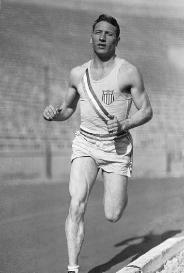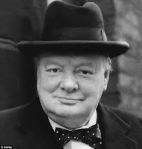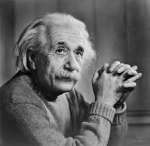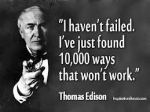Ludwig Van Beethoveen was born in 1770 in Bonn, Germany as the son of a court musician. At a very early age, Beethoven received violin and piano lessons from his father Johann.
He suffered a tragic childhood. His father was an alcoholic and often abused him. Johann would force Ludwig to practice all of the time, and when Beethoven would make a mistake he would slam the piano cover on his knuckles and make him play it over again. His childhood and adolescence were difficult due to his father’s harsh discipline and alcoholism.
At the age of 8, he studied theory and keyboard with van den Eeden (former chapel organist). He also studied with several local organists, received piano lessons from Tobias Friedrich Pfeiffer, and Franz Rovantini gave him violin and viola lessons. Although Beethoven’s musical genius was compared to that of Mozart’s, his education never exceeded elementary level.
Ludwig van Beethoven was told by one of his teachers that he had no future career as a composer. Little did he know that Beethoven would go on to be one of the greatest classical music composers of all time.
 Beethoven gave his first public appearance (playing piano) when he was eight and had his first piece of music published by the time he was 12 years old.
Beethoven gave his first public appearance (playing piano) when he was eight and had his first piece of music published by the time he was 12 years old.
His father Johann was increasingly becoming worse and worse with his drinking and lost his job as a tenor at the Electoral court. Beethoven, realizing that he now had to support himself and his brothers, sought work, and by 1782 he served as deputy organist when Christian Neefe (Court Organist) took leave. By this time, Beethoven was already composing works and was considered to be a piano virtuoso, and the next year, Ludwig was hired as orchestral harpsichordist at the court.
As a teen, he performed more than he composed. In 1787, Neefe sent him to Vienna and he met and briefly studied with Mozart. Two weeks later, he returned home because his mother had tuberculosis. She died in July. His father took to drink, and Beethoven, only 19, petitioned to be recognized as the head of the house; he received half of his father’s salary to support his family.
In 1792, Beethoven relocated to Vienna. This is the beginning of his early period which lasted roughly until 1800. During this time Beethoven quickly made a name for himself as a virtuoso pianist. He used his abilities at the piano to gain favour with the nobility. His compositions during this period consisted mainly of works for his main instrument, the piano. An example of a piece composed during this time is the Pathétique Sonata, Op. 13 (1798).
Beethoven really didn’t have a steady job. He made most of his money by playing the piano in Salons at gatherings and giving piano lessons to wealthy students. Basically, Beethoven was one of the first freelance composers in Vienna. Beethoven quickly gained popularity in the Vienna court and in the town. He often challenged people to test their musical ability.
Once establishing himself, he began composing more. In 1800, he performed his first symphony and a septet (op. 20). Publishers soon began to compete for his newest works.
It is relevant at this time to include a few words about Beethoven’s compositional processes. Mozart was able to get on a train, a few hours later get off with a whole opera composed in his head. Beethoven couldn’t do that. In fact every phrase, every note was like pulling teeth. Beethoven never had less than one composition going on at the same time. He used sketch books to write down his ideas when they flew into his head, before he forgot them. Even after he had an idea, he had to work it out just right. What resulted was a mess of erasures and scribbles on a piece of paper that a copyist would later have to decipher.
He began hearing buzzing noises around 1796. He began losing his hearing around 1798. By 1801, however, he had lost 60% of his hearing and became a social recluse because, as a musician and composer, he hated to tell people he was going deaf. By 1816, his hearing loss was nearly 100%.
At first the malady was intermittent or so faint that it worried him only occasionally. But by 1801 he reported that a whistle and a buzz was constant. Low speech tones became an unintelligible hum, shouting became an intolerable din. Apparently the illness completely swamped delicate sounds and distorted strong ones. He may have had short periods of remission, but for the last ten years of his life he was totally deaf.
He was very upset by this so much so that he thought of ending his life. Beethoven’s social life was affected the most. He is said to have had sudden bursts of anger, insulting those around him. As his hearing became worse, Beethoven went into seclusion from both the public and his friends. He only communicated with visitors and trusted friends by writing.
He even considered suicide because of his deafness and his inability to perform at public concerts which were a great source of money. After all, Beethoven too was a human.
Beethoven lost his hearing and went deaf but continued to compose music. Hard to believe? It’s completely true!
 After he became deaf, he started to observe the vibrations of piano. Beethovan noticed that he could not hear high notes when playing piano. To hear his own compositions, he sawed the legs off of his piano and placed the piano on the floor, and pressed his ear to the floor as well. He would then proceed to bang on the keys, to hear what he had written.
After he became deaf, he started to observe the vibrations of piano. Beethovan noticed that he could not hear high notes when playing piano. To hear his own compositions, he sawed the legs off of his piano and placed the piano on the floor, and pressed his ear to the floor as well. He would then proceed to bang on the keys, to hear what he had written.
The important thing is that Beethoven did not give up and realized that he had to face the truth and continue living his dream of composing music. Even Beethoven’s deafness was not enough to be an obstacle large enough to block his path of success.
Determined to overcome his disability, he wrote symphonies 2, 3, and 4 before 1806. The late period saw the compositions of Beethoven’s largest works: the Mass in D (Missa Solemnis), Op. 123 (1818-23), the 9th Symphony (Choral), Op. 125 (1818-23), the Hammerklavier Sonata, Op. 106 (1818), and the late string quartets.
Beethoven’s fame began to pay off; he soon found himself prosperous. His symphonic works proved to be master pieces along with his other works,
In 1809, however, his musical output began to drop, possibly in connection to his declining health and mental state. Around 1815 the famous Immortal Beloved affair occured which left Beethoven in deep depression and contemplating suicide. Beethoven loved a woman named Fanny, but never married.
Beethoven’s output was mostly null until 1818. At this point he was completely deaf and slightly mad. Also his brother died leaving Beethoven’s only nephew, Karl, in the guardianship of his mother. Now Beethoven felt that she was not fit to raise Karl, so he entered into a vicious lawsuit over custody of the child. For the most part he was able to use his influence with the aristocracy to win the battle. Unfortunately Beethoven was not a fit father and his relationship with Karl was quite poor, driving him to an suicide attempt a few years later. Beethoven loved Karl dearly, and the pain of his failed attempts to teach Karl music must have been devastating for Beethoven. It’s often speculated that Karl was probably a strong contributor to Beethoven’s late style.
Beethoven was seriously ill. In 1827, he died of dropsy at the age of 56.
To many, Beethoven represents the highest level of musical genius keeping in mind composers such as: Bach, Mozart, Handel, and Haydn. Beethoven’s life was very productive, given that he had no formal education past the 5th grade, and of all of his hardships in which he had to deal with.
Beethoven saw his deafness as a challenge to be fought and overcome. His stubborn nature strengthened him and he came to terms with his deafness in a dynamic, constructive way to become world famous composer.
- Quotes of Beethoven
“I will take fate by the throat; it will never bend me completely to its will.”
“Recommend to your children virtues, that alone can make them happy, not gold.”
“Then let us all do what is right, strive with all our might toward the unattainable, develop as fully as we can the gifts God has given us, and never stop learning”
“To play without passion is inexcusable!”
“This is the mark of a really admirable man: steadfastness in the face of trouble.”
Beethoven speaking to royalty: “What you are, you are by accident of birth; what I am, I am by myself. There are and will be a thousand princes; there is only one Beethoven.”
“The barriers are not erected which can say to aspiring talents and industry, “Thus far and no farther.”














 Later in college Glenn made the track team where his tremendous determination paid off. He eventually received the nickname the “Kansas Flyer.”
Later in college Glenn made the track team where his tremendous determination paid off. He eventually received the nickname the “Kansas Flyer.”



























